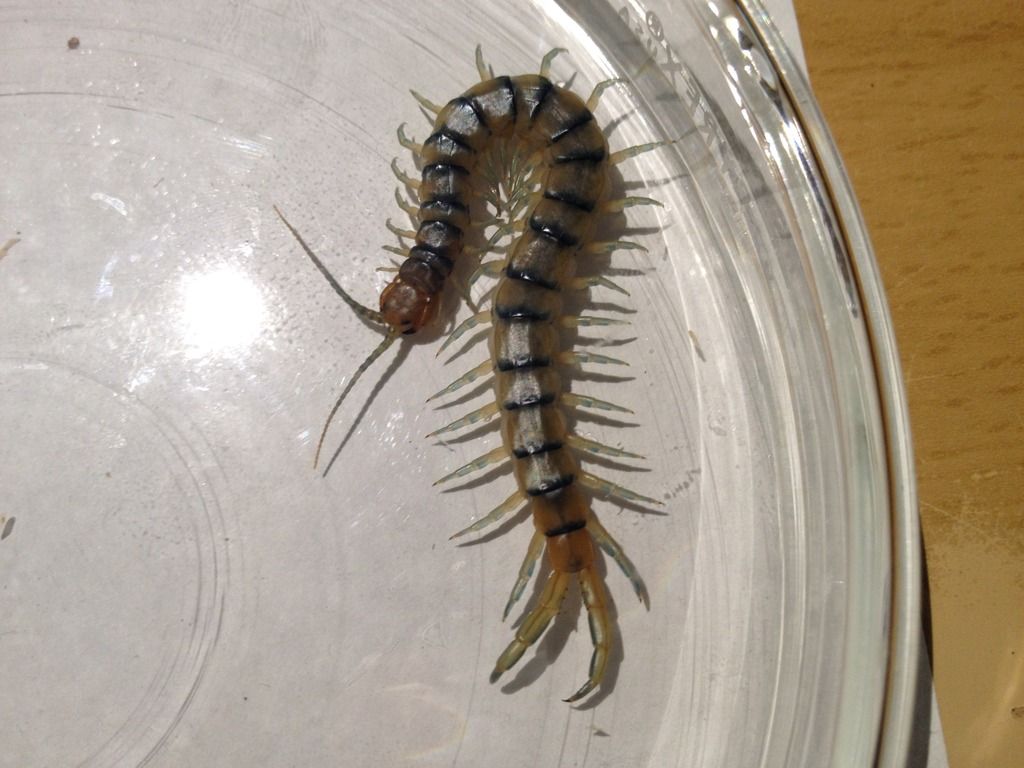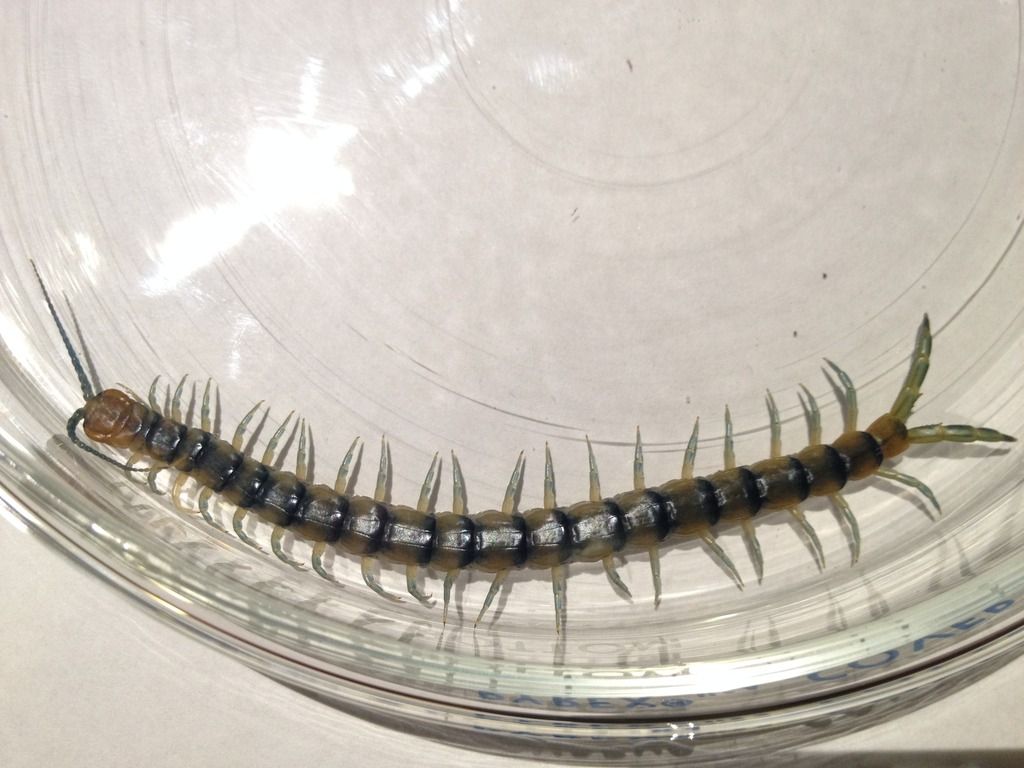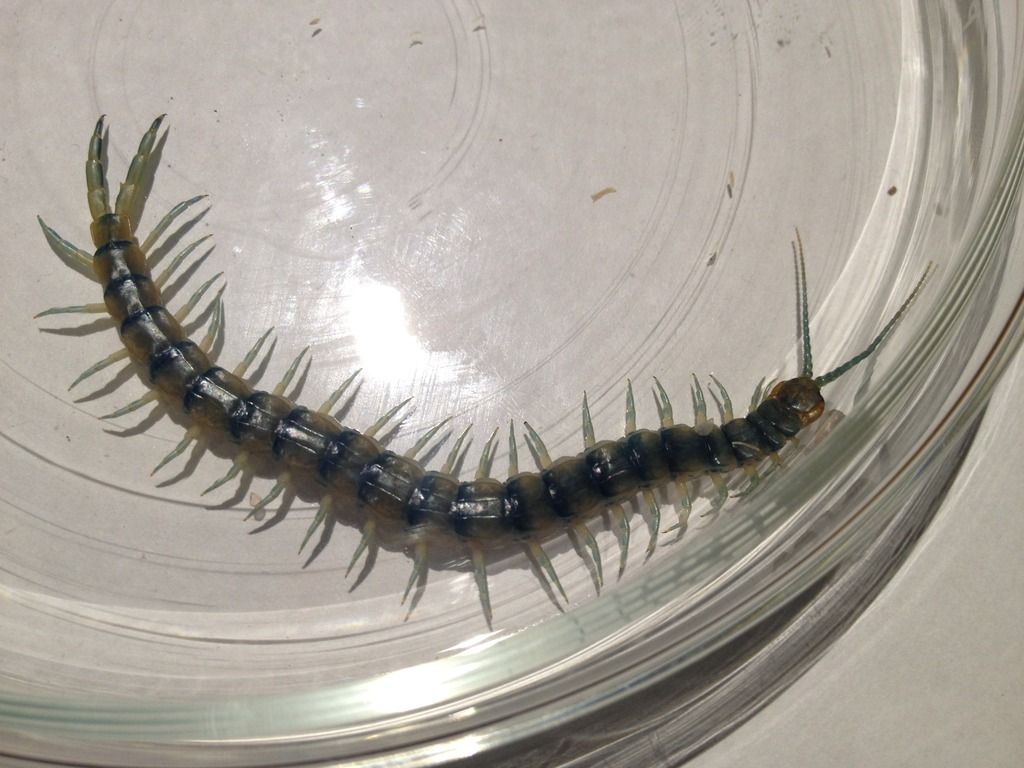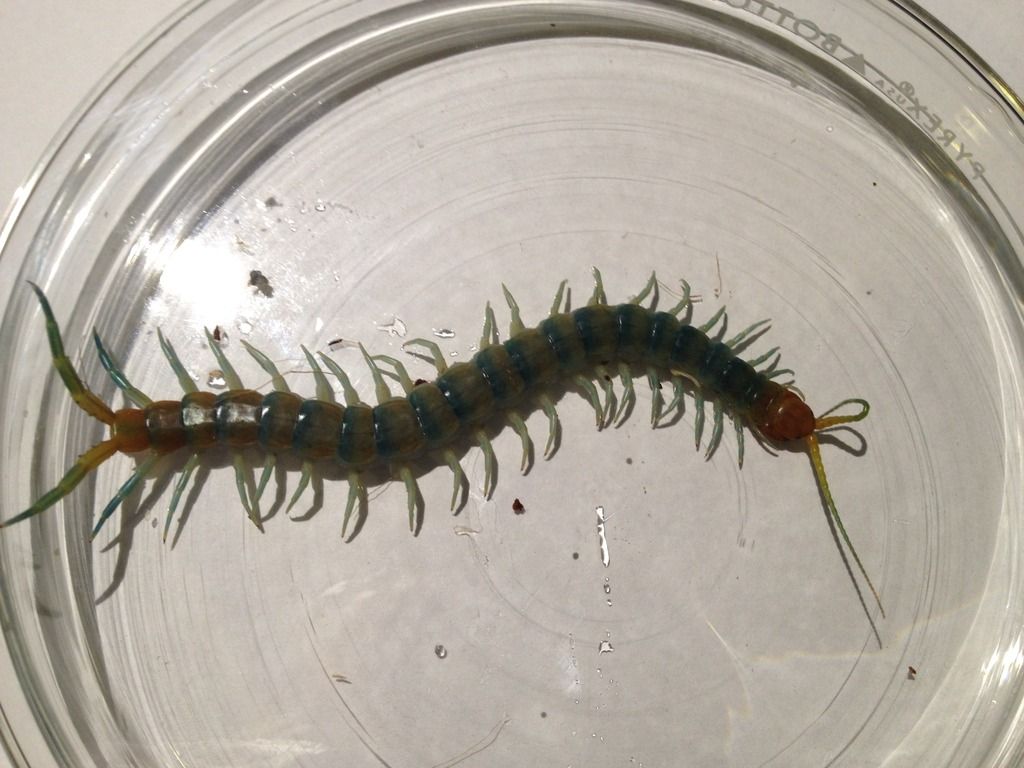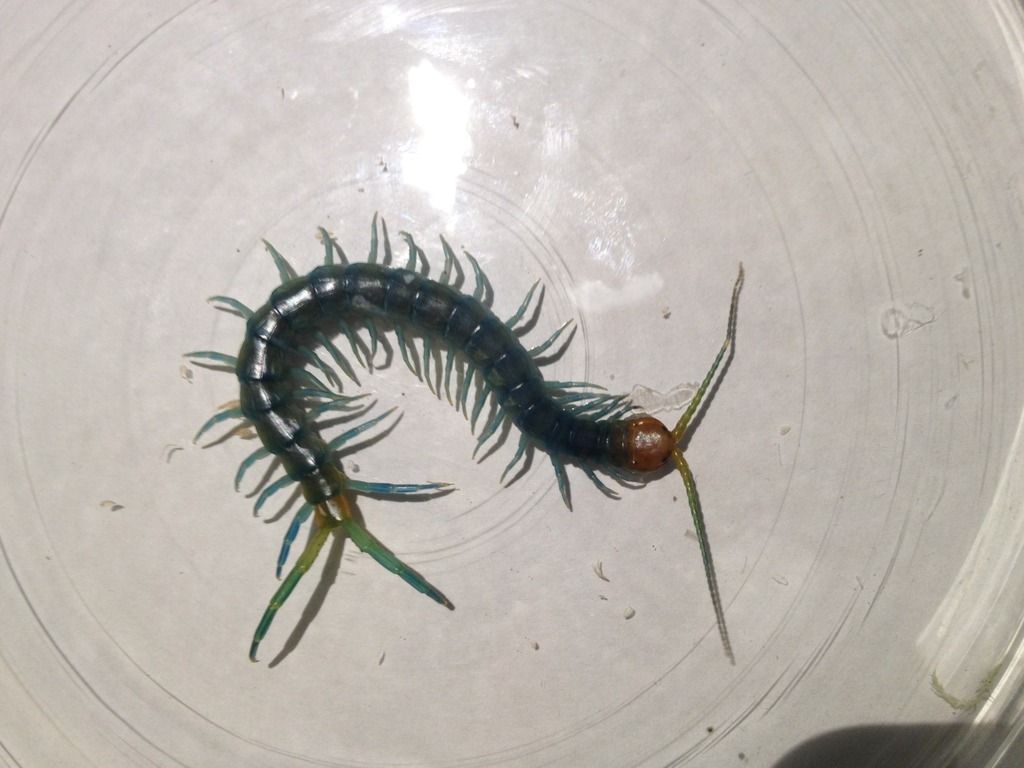- Joined
- Oct 11, 2012
- Messages
- 255
Went to my usual collecting spot and found some Scolopendra beneath some rocks. I've never seen them there before, but there was more rain this year and they were probably displaced from wherever they've been hiding during the past years of lower rainfall. Most of the ones I saw had varying amounts of blue, but I found and captured an adult that's mostly orange.
I only managed to catch two adults and one small juvenile since the rocks they were hiding under were surrounded by thick, tall grass.

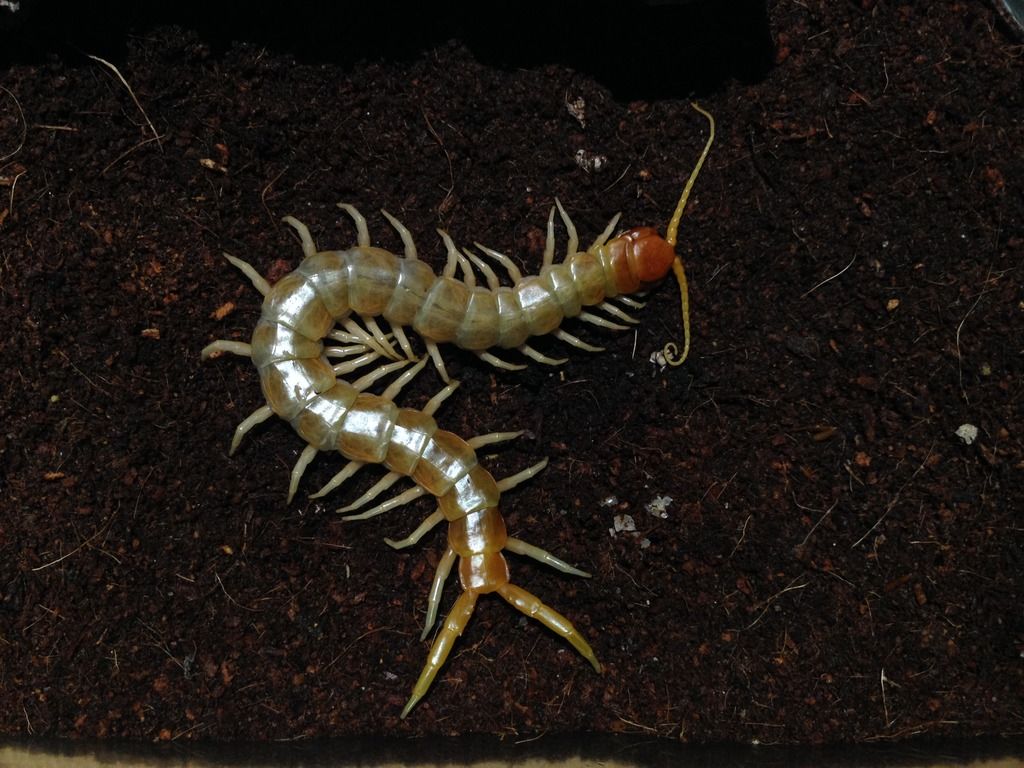

I only managed to catch two adults and one small juvenile since the rocks they were hiding under were surrounded by thick, tall grass.




